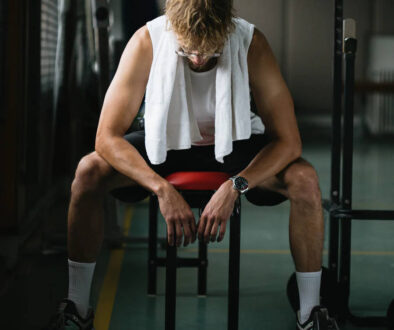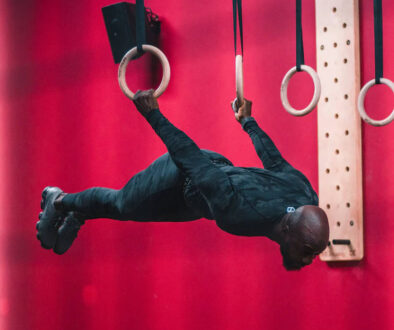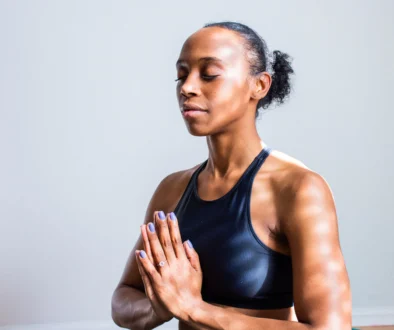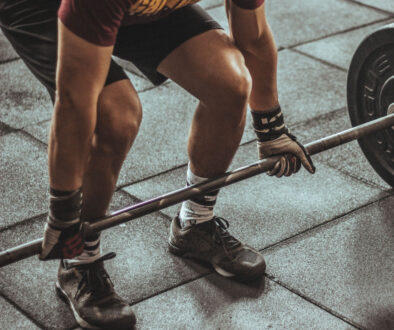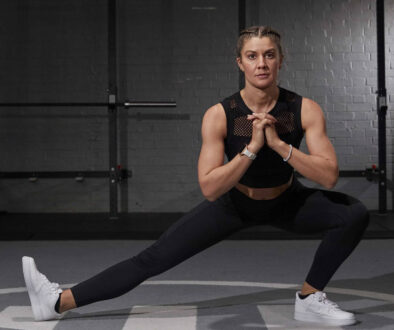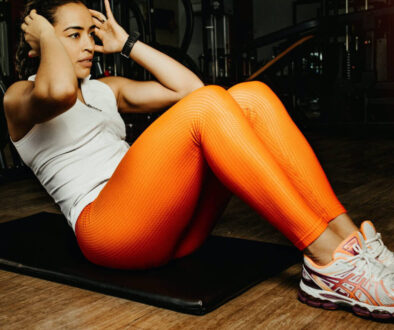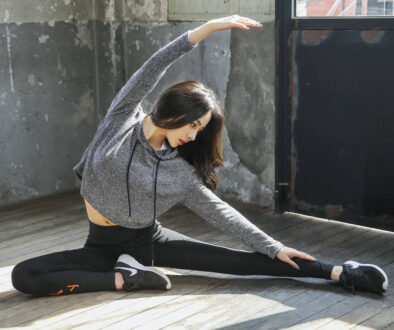4 Different Types of Squats: Muscles Worked, Benefits, Videos, Variations & Tips
Characterized by burning legs and increased muscular activation, there’s no doubt that squats are the kings of leg workouts. Squats tend to come in a variety of styles and types which can make it difficult to know which the best type is to add to your workout program. We explore four different types of squats, the muscles worked, benefits, videos, variations and tips.
So, I’ve put together my 4 favorite squat variations with details on who should be doing them and why they’re so beneficial.
Benefits of Squats
There are several benefits of squats that make them a staple part of any lifters or athletes leg day.
- Increase lower body muscle mass – particularly quads, glutes, hamstrings
- Activation of stabilizer muscles such as calves and abdominals
- Can improve balance and in some cases mobility and flexibility
- Functional movement which can support daily activities outside of exercise

1. Barbell Squat
The standard, go-to exercise for powerlifters and cross trainers alike. The thought of heavily loaded barbells and grimacing athletes is synonymous with barbell squats, yet they can provide so much more than just big legs.
Activating a variety of stabilizing muscles and putting your range of motion to the test whilst under load, barbell squats can burn calories and build muscle.
Muscles Worked
Barbell squats primarily target:
- Quads
- Hamstrings
- Glutes
- Calves
- Core
They’re great for…
Beginners looking to begin their cross-training or powerlifting journey should consider adding barbell squats to their workout program. They can overload and target a variety of lower body muscles and if you use a low weight (or even just the barbell itself) to begin with, you can get the form just right.
If your fitness goals are to lose weight but you still want some toning on your muscles, the added muscle activation in barbell squats means that you can burn plenty of calories whilst activating and strengthening your leg muscles. For maximum fat-burning effects, go for lower weight and faster reps.
For powerlifting competitors, barbell squats are a must. Not only are they an event themselves, but they can also help provide the foundational strength to support other lifts such as deadlifts and lunges.
Coaching Tips
Use a mirror to check that you are maintaining a straight path as you come up out of the squat. It’s common for lifters to fall forward, arch their back, or for their knees to track outside/inside the feet. All of these can affect muscle development and in many cases cause injury.

When lowering into the squat you should grip the floor with your feet by spreading your toes and forming the “tripod position” so that your weight is evenly distributed across your feet. As you drive upwards, lift the toes to drive through the heel and engage the quads.
Variations
A. Barbell Front Squat
This variation distributes the load slightly differently resting the barbell on the upper chest. It places more demand on the glutes and quads than a traditional barbell squat.
B. Barbell Hack Squat
This variation replicates the movement found in a hack squat machine, just at a different angle. You hold the barbell behind you, so your arms take the weight and not your torso.
2. Goblet Squat (Sumo Stance)
A user-friendly squat variation, the goblet squat is often viewed as a stepping-stone to more advanced squats. I do think it has its place in advanced fitness workouts though.
A wider stance and different weight distribution mean the goblet squat activates the often under-trained glutes more than other squats. By encouraging the lifter to break the parallel plane between their thigh and the floor, it has huge mobility benefits too.

Muscles Worked
The key benefit is the glute activation but like all squats, the goblet squat is a compound exercise so other muscles jump to action too. Muscles targeted include:
- Glutes
- Quads
- Calves
- Hamstrings
- Core
- Lower back
They’re great for…
The full range of motion in a goblet squat means you can increase your mobility and flexibility as you look to get as close to the floor as possible. Each time you perform the exercise you should target getting a little bit lower.
Goblet squats also work well for lifters looking to build glute strength. Most squats activate the glutes as supporting muscles, however, the wide stance on goblet squats means increased activation on these leg muscles.
A big benefit of goblet squats is that they can be done from home or at the gym with no need for specialized equipment such as a barbell or machine. If the barbell is unavailable meaning you can’t do your usual squats, grab a kettlebell or dumbbell (or anything really that is easy to hold) and try the goblet squat as an alternative.
Coaching Tips
Actively keeping the weight close to your chest can increase focus on the working leg muscles as your arms and biceps aren’t called into action. It can also allow for more weight to be lifted as the legs can deal with significantly more weight than the arms.
Bracing the abs before you squat can help with performing a controlled rep on the goblet squat. also, consider tensing the lower back to maintain the correct form and avoid arching of the back.
Variations
A. Goblet Box Squat
Using the same stance and movement as a goblet squat, placing a box to lower yourself onto is great if you struggle with the range of motion on this exercise.
B. Resistance Band Goblet Squat
Using a resistance band instead of weights, this exercise allows for more focus on range of motion and can help strengthen the outer thighs and hips.
3. Cossack Squat
Packed with benefits and a really good challenge for any fitness enthusiasts looking to test themselves, the Cossack squat is one of my favorite types of squats. It’s an exercise we should all be integrating into our workouts whether we are a powerlifter, fairweather gym-goer, or CrossFit athlete.
You can check out my article as to why we should all be Cossack squatting here.
It’s essentially a single-leg variation of the goblet squat, working the left and right legs independently. Not only does it come with all the benefits single-leg exercises provide, but Cossack squats also have an increased range of motion improving flexibility, mobility, and balance.

Muscles Worked
The Cossack squat is ideal for strengthening the glute medius, a muscle that plays a vital role in stability during leg movements.
Muscles worked in the Cossack squat include:
- Glutes
- Obliques
- Quads
- Calves
- Hamstrings
- Abs
They’re great for…
Cossacks squats are brilliant for increasing your range of motion, flexibility, and mobility. So many exercises we do in the gym use one plane of motion (frontal). Think squats, deadlifts, lunges. Adding the Cossack to your routine can introduce your body to the sagittal plane whilst testing and improving your ankle and hip mobility as you look to get as low as possible.
By focussing on one leg at a time, Cossack squats are ideal if you want to even out muscle imbalances. On a standard squat, it can be hard to spot imbalances as our stronger leg will compensate for lack of strength in the other. Doing Cossacks, you will figure out if you have an imbalance straightaway.
They can also help you build strength in lesser trained muscles, which will support heavier squats, deadlifts, and lunges. There aren’t many exercises that activate the glute medius so much, therefore the Cossack squat is one of a few that can truly improve balance and stability on advanced and heavy lifts.
Coaching Tips
If you are struggling to maintain balance, consider using a counterbalance such as a light kettlebell or dumbbell, holding it at chest height. The loading will offset your bodyweight making it slightly easier to stay upright as you go lower.
Once in the starting stance, try turning your toes outwards. This can support balance and muscular activation as you perform the exercise.
Variations
A. Landmine Cossack Squat
Using a landmine setup to do the Cossack squat can help you perfect the posture and balance on the typical Cossack. Alternatively, it can add some variation to your Cossacks.
B. Hamstring-focussed Cossack Squat
Adding rotation in your torso as you lower yourself towards the ground can place a bit of extra focus on your hamstrings. You’ll really feel it contract and activate as you push through the heel to rise back up.
4. Pistol Squat
The pistol squat is a highly advanced squat that requires plenty of balance, strength, and skill to complete. But once you can do it, you won’t regret working your way up to performing it perfectly.
It can improve balance, range of motion, and impress your mates (and strangers) at parties. It definitely sits on the throne as the champion of single-leg exercises.
Muscles Worked
Quads, quads, and more quads. The quads are the main movers in the pistol squat due to the knee flexion and extension. There is activation across other lower body muscles too which provide balance and support the quads in completing the exercise.
Muscles used in the pistol squat include:
- Quads
- Glutes
- Abductors
- Adductors
- Calves
- Abs
They’re great for…
Pistol squatting regularly can support increased coordination and balance, particularly on one leg. This is especially useful for athletes who compete in sports which involve lots of jumping and landing on one leg, sprinting, and sharp changes of direction.

The increased amount of ankle, knee, and hip flexion can improve mobility and flexibility. The added range of motion can assist with deeper squats and lunges, providing power and control through the movements.
Like with all single-leg exercises, pistol squats will highlight and even out any muscular imbalances as your stronger leg can no longer compensate for the weaker leg. This is great for injury rehab, injury prevention, and improving muscular imbalances.
Coaching Tips
Before trying the pistol squat for the first time, you should try progression exercises such as box pistol squats to work your way up to performing the exercise with perfect form and maximizing its benefits.
Try to remain slow and controlled as you lower yourself into the squat. Going too fast can lead to you bouncing on the way back up, reducing the work your leg muscles do during the rep as momentum takes you up and back to standing.
Variations
A. Box Pistol Squat
Using a box to squat onto is a great progression exercise that helps you perfect the form and improve your balance ahead of attempting the full pistol squat.
Final Thoughts
There we have it, 4 different types of squats for you to try in the gym or during your next home workout. Add these to your leg workouts and reap the benefits of muscular hypertrophy, increased mobility, and added variation to your fitness program.



